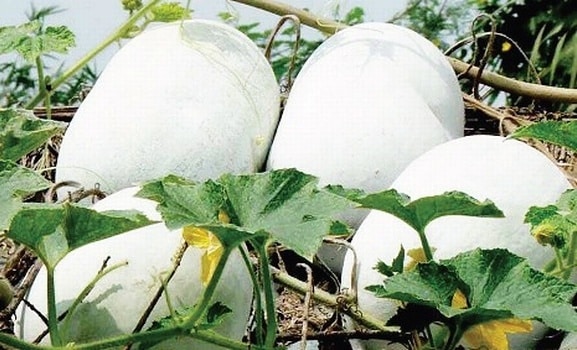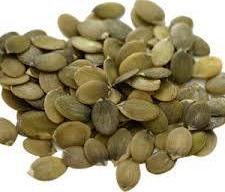A step by step guide for ash gourd farming techniques, cultivation practices
Today, we discuss the ash gourd farming, ash gourd plant care, ash gourd yield and harvesting procedure.

Introduction of Ash Gourd:
Ash gourd is one of the popular vegetables cultivated throughout India and extensively in the state of Kerala. Basically, Ash gourd is native to Java and Japan. Ash gourd also called as “Winter Melon” or “Wax Gourd”. It is grown for its immature as well as mature fruits. These are used in cooking, confectionery. Due to its medicinal properties, this vegetable/fruit is also used in ayurvedic medicinal preparations. The famous delicious Petha” is made out of this ash gourd. This crop is cultivated in south India for the vegetable purpose whereas in north India to make “Agra petha”.
Benefits of Ash Gourd:
Some of the health benefits of Ash Gourd are as follows.
- Ash gourd helps in losing weight.
- Ash gourd is a good diet for diabetics.
- Ash gourd helps in curing peptic ulcer.
- Ash gourd kills intestinal worms.
- Ash gourd helps in treating constipation.
- Ash gourd helps in treating the common cold.
- Ash gourd helps in relieving acidity.
- Ash gourd is good for nerve system.
Ash Gourd Local Names in India:
Ash gourd, White gourd, Wax gourd, Winter melon (English), Petha, Pethakaddu (Hindi),Kohla (Marathi),Neer poosanikai (Tamil),Kumbalanga (Malayalam),Boodida Gummadikaaya (Telegu), Budekumbalakayi, Boodu gumbala (Kannada), Kumra, Chalkumra (Bengali), and Komora (Assamese).
Improved Commercial Varieties of Ash Gourd in India:
Pusa Ujjwal, Kashi Ujawal, CO-1, CO-2, APAU Shakthi, MAH 1, IVAG.502, and MHAG 2 are the main hybrid varieties cultivated across India.
You may be interested in Betel Leaf Cultivation Income.
Climate Required for Growing Ash Gourds:
Basically this crop is a warm-season crop and thrives best @ temperature between 24°C to 31°C. This crop also grows well in humid and heavy rainfall regions. Ash gourd crop is susceptible to frost conditions.
Soil Requirement for Ash Gourd Plantation:
This crop tolerates a wide range of soils. However, well-drained deep sandy loam soils with a pH range of 6.0 to 6.5 are best for its cultivation. A higher yield can be expected in warm tropical climatic conditions with good soil organic matter.
Propagation of Ash Gourd:
Propagation is mainly done through seeds.
Land Preparation for Ash Gourd Sowing:
Plough the field about 4 times or until it attains fine tilth stage. Add well rotten farmyard manure in the last plow on the top layer. Dig the pits of 30 x 30 x 30 cm @ spacing of 2 m x 2 m and form basins in the field.
The Seed Rate of Ash Gourd:
An average seed rate of 0.75 to 1.0 kg per hectare land is required.

Ash Gourd Seed Treatment Procedure:
For improving the seed germination, soaking the seeds in cold water for overnight is recommended. To prevent from soil born fungal diseases, treat/soak the seeds in 0.2% of bavistin solution for 2 to 3 hours before sowing.
The Best Sowing Season for Ash Gourd:
Ash gourd crop can be sown from January to March and September to December months.
You may also check the Apple Ber Pruning Methods.
Sowing and Spacing of Ash Gourd Plants:
Ash gourd seeds should be sown @ 4 to 5/pit at 1 to 2 cm depth in the soil (avoid deeper sowing as it may delay germination). After 2 weeks of sowing, check for unhealthy plants and remove them. Retain 2 to 3 plants/pit. For better germination, use 3 to 4 months old seeds. Initial growth stage of ash gourd is slow compared to pumpkin growth. Spread the dried twigs and coconut fronds on the ground for trailing purpose. The distance between plants should be about 3.0 m x 2.0 m.
Nursery Raising Seedlings for Ash Gourd Production:
Seedlings can be raised on nursery or greenhouse beds. Sow 2 to 3 seeds/pit/container and thin to single seedlings when they attain about 4 leaves. Water regularly these beds for better germination. Seedlings will be ready for transplanting into the main field in about 2 to 3 weeks or when they reach about 15 cm tall. Spacing should be maintained just like a direct seedling in the main field.
Irrigation requirement for Ash Gourd Growth:
Basin should be Irrigated before dibbling the ash gourd seeds in the field for better germination. In the initial stages after sowing the seeds, it is required to carry the irrigation @ 3 to 4 days interval. As flowering and fruiting stage is critical, carry the irrigation at alternate day interval. Furrow method is ideal for irrigating the crop. However, in the limited water source regions or to effectively use the water content, one can opt for drip irrigation. In the rainy season, avoid water stagnation in the field by providing proper drainage.
It is not too late to check the Biogas Production Process.
Weed Control in Ash Gourd Crop:
Carry out the hand or hoe weeding as needed. Raking up the soil at the time fertilization is required. Carry the earthing operations during the rainy season. Mulching can be done on the crop grown on raised beds.
Manures and Fertilizers for Ash Gourd Crop:
Application of farmyard manure of 25 tonnes per hectare as the basal dose is required at the time of land/soil preparation. Fertilizers, 25 kg of P2O5 (full dose)/ha, 25 kg of K2O (full dose)/ha and 1/2 dose of Nitrogen (35 kg) should be applied. The remaining of Nitrogen (35 kg) can be applied in 2 equal split doses at the time of vining stage and full bloom stage.
Hormone Application in Ash Gourd Farming:
To increase the number of female flowers in the crop, flowering hormones can be applied. This will result in a double fruit yield. Just one application of gibberellic acid @ 25 – 100 ppm will increase the female flowers by 50% in the crop and can work for up to 75 days.
Pollination of Ash Gourd Plants:
As ash gourd crop is a cross-pollinated, especially bees will pollinate the flowers in the crop. To avoid the hand pollination, Introduce the beehives for good pollination.
Pests and Diseases of Ash Gourds:
Leaf beetles, leaf caterpillars, and fruit fly are the major pests found in ash gourd farming.
- To control leaf beetles & leaf caterpillars in the crop, spray Malathion 50 EC 1 ml/liter of water or Dimethoate 30 EC 1 ml/liter of water.
- To control fruit fly, destroy the effected fruits in the crop. Apply neem oil at the rate of 3.0 % as a need-based foliar spray.
- To control aphids, spray Imidacloprid @ 0.5 ml/liter of water along with enough quantity of stickers like triton X100.
You may be interested in Smart Farming in India.
The main diseases found in ash gourd farming are powdery mildew & downy mildew.
- To control powdery mildew disease, spray Dinocap 1 ml/liter of water (or) Carbendazim 0.5 grams/liter of water.
- To control downy mildew, spray Chlorothalonil (or) Mancozeb 2 grams/liter of water twice @ 10 to 12 days interval.
How and When to Harvest of Ash Gourds:
In ash gourd farming, the fruits will be ready for harvesting after 90 to 100 days after sowing. This may continue up to 5 months (150 days) after sowing. These fruits can be harvested at an immature stage or fully matured stages depending on the requirement of the local market. Immature fruits can be harvested 1 week after anthesis. Harvesting of immature fruits can be done @ weekly interval. Matured ash gourd for seed production, storage or export can be harvested after waxy coating on fruit surface is fully developed. Wash the fruits thoroughly after harvesting before storing.
The yield of Ash Gourd:-
Yield in ash gourd cultivation depends on how local market demands.
- At the mature stage harvesting, an average yield of 12 to 15 tonnes per hectare land can be expected.
- At an immature stage, 24 to 30 tonnes per hectare land can be expected.
However, the yield of ash gourd depends on many factors like soil type, variety, season, and other cultivation practices.
You may also like Growing Potatoes from Seed.
Where can I get ash gourd seeds?
Your article is always silent on availability of seeds.
Very good information provided here as I will be growing ash gourd for the first. time. I am late but sowing in cocopeat trays. Thanks for this Input.
VERY INFORMATIVE
Thanks for Excellent information….